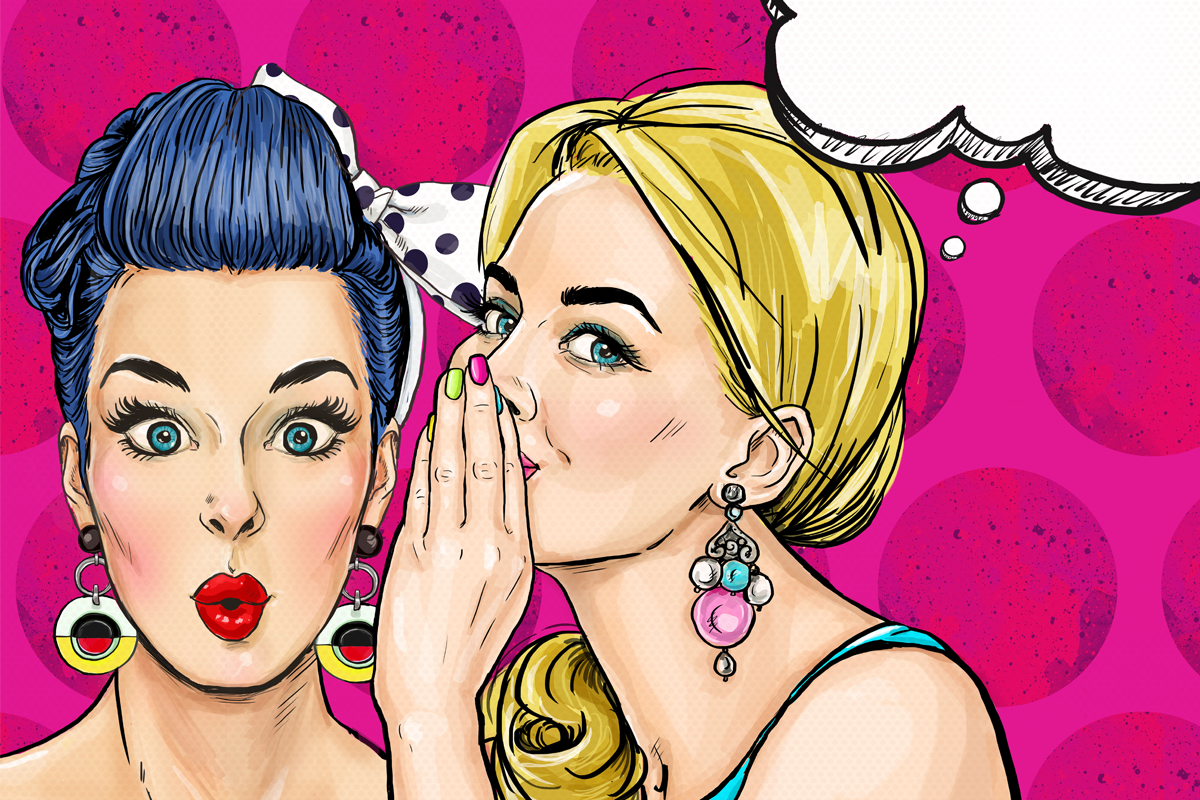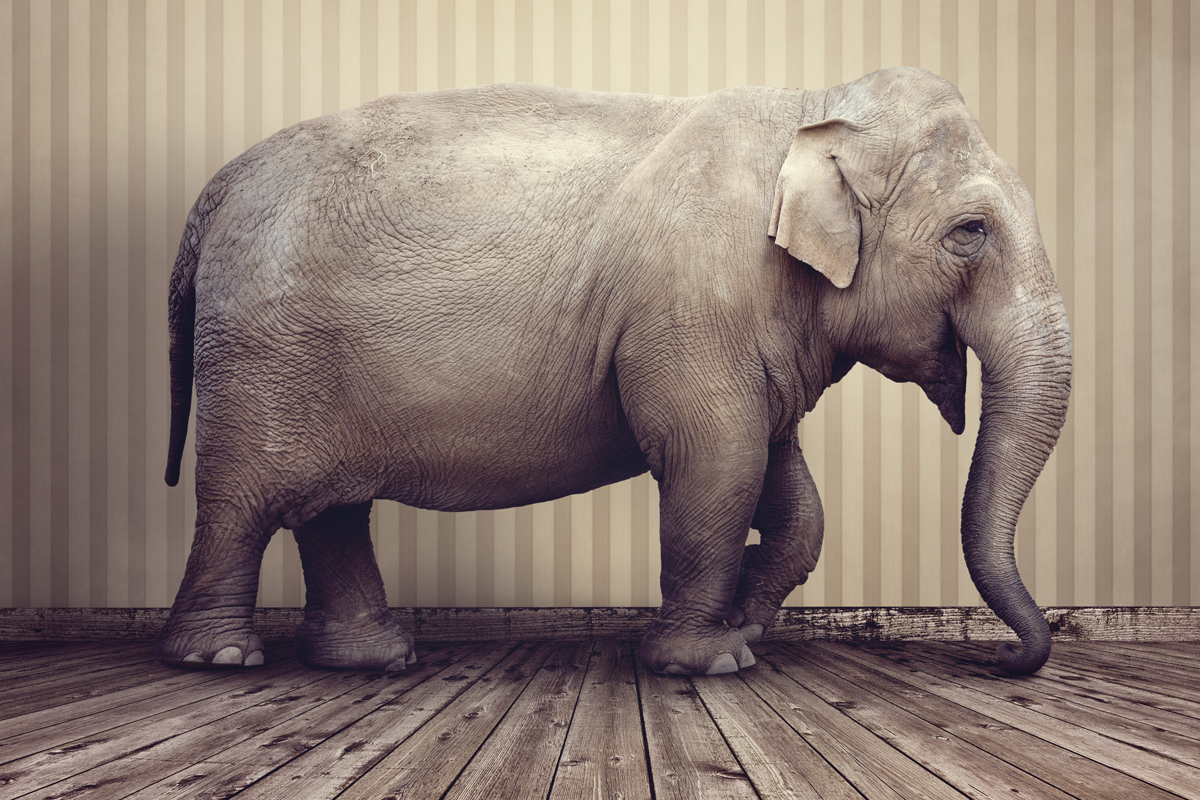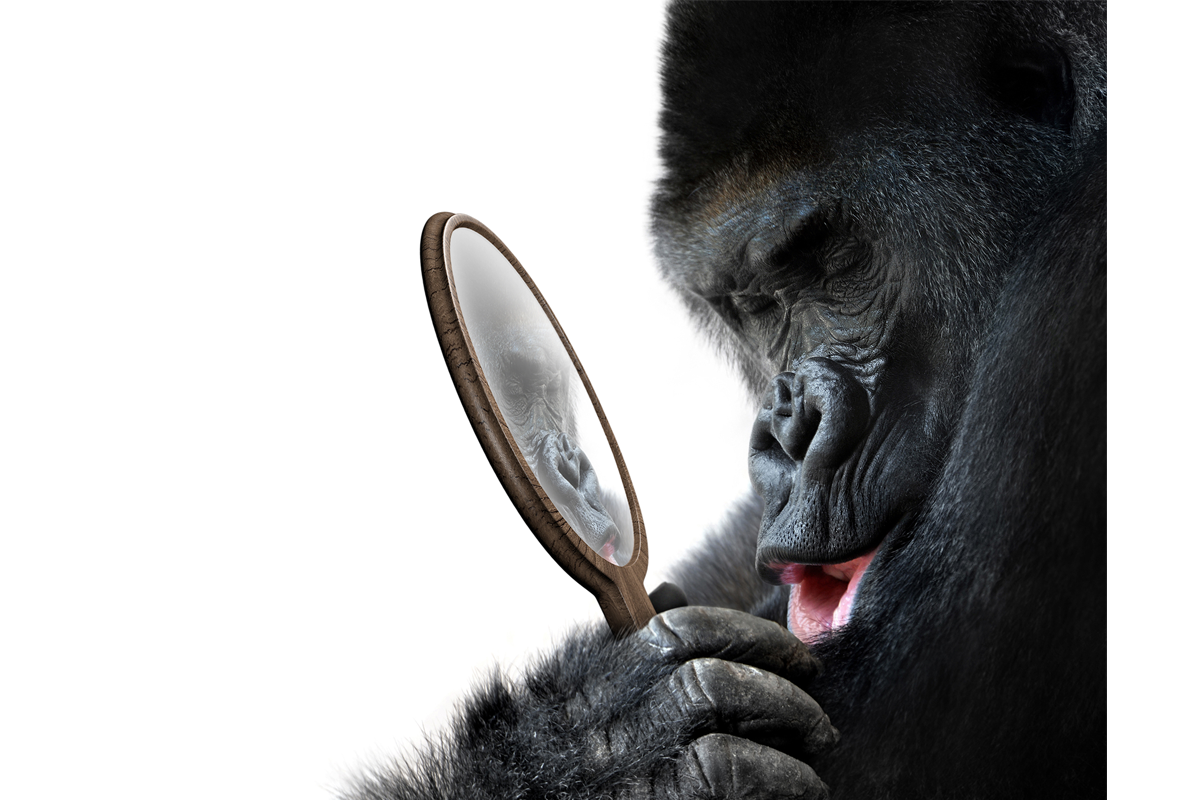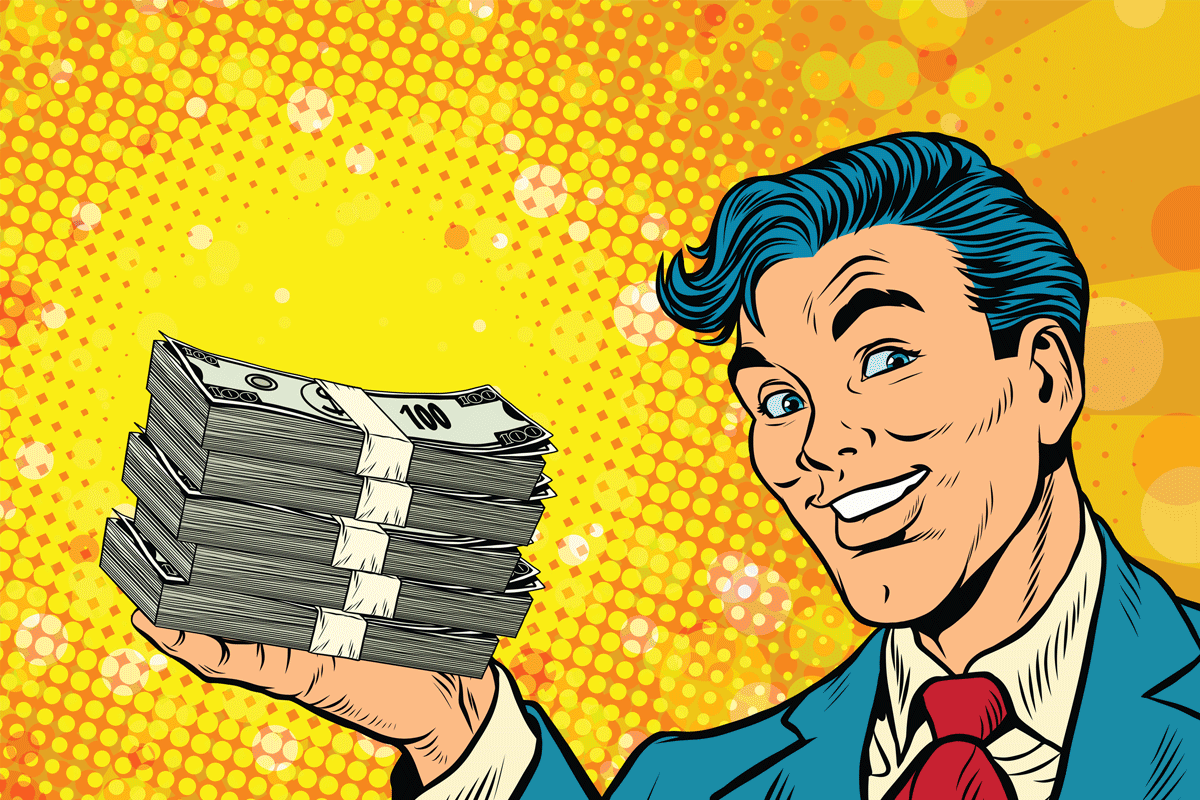A Useful Model

This post will end with a suggestion to be considered. A model through which to observe the world and your own behaviors within it. For some, this suggestion will be rejected out of hand. For others, this suggestion will allow one to make sense of everything. A internal feeling of the pieces clicking together. What you do with that (if you find this helpful) is entirely up to you.
What Are Models Anyhow?
A model is an attempt to understand a complicated system. They are usually used in the sciences, and often times in economics (which to many is not a science). The way they are “supposed” to work (we’ll look at that word later in more detail) is like this. You have a system that you’d like to understand. You come up with a mathematical and or scientific model that explains it.
Then you see how closely your model matches the observations. If you have a close match, if your observations fit nicely into the model, then you have a winner. If your model matches in some areas but not others, you’ve got some work to do.
Real World Limitations
Creating and testing models is very expensive. This means things need to be paid for. It’s rare, and unlikely, that you will have an entity of some sort paying for this testing to be completely neutral on the model that is eventually discovered. People that pay for things tend to want to get something in return.
Everybody’s Got An Angle

The trouble is already apparent. If you’ve got an organization (private or government) that is paying for a model to be determined, they are usually doing so because they have an intention. And that intention is generally dependent on what specific type of model is discovered.
All Models Are Suspect
This means whenever a group of scientists say they have evidence of something, the first question that is helpful is:
“Who benefits from this model?”
Many studies have been done in support of recent medications, for example. But strangely enough, those who are in charge of the study are the same entities who stand to make a lot of money if the new medication is proved to be safe.
Why The Conspiracy Talk?
The model we will be discussing is similar, in that parts of you will have a vested interest in believing this model, but other parts of you will have a vested interested in not believing it. In fact, depending on which “part” of you is “stronger,” you may love this model, or you may hate it.
Background Ideas

First we’ll go through some basic background ideas about human behavior, human thinking and some general ideas about self-deception. Once we get those clear, will present our model.
Always Two Benefits
Consider making a simple purchase. One one hand, you are buying a box of cookies. You feel like eating cookies, and you plan to eat them as soon as you buy them. These cookies, (as do all other things which we’ll see in more detail later) satisfy two primary benefits. Material benefits and emotional benefits.
The material benefits are the cookies and all the things that are associated with eating them. The emotional benefits come from eating them, which can be seen as a function of their material benefits.
On the other hand, imagine buying a very expensive pair of designer shoes. The material benefit they serve is keeping your feet dry, providing support, and doing all the things shoes are supposed to do. But the emotional benefits are all the things that come with what we call fashion. If they are a popular brand, if they make you look good, etc.
Most clothing we buy serves both of these. The material benefit is generally a minimum level. All shirts provide the same material function, but some shirts make you look good, which will hopefully increase your social desirability, etc.
Humans Are Social Creatures
Our next idea is that humans are very social creatures. It is very hard for us to do anything, or think about doing anything without simultaneously considering our social reference group. We are, by definition, pack animals. It is very hard for any individual to do anything contrary to what the herd does. One of the main reasons students like school uniforms, for example, is it removes the need to worry about the opinion of the social reference group when choosing clothing every day.
We’ve been social creatures for a long, long time. Since before we developed much of our conscious thinking and our language skills. Since we still carry many instincts from our long evolutionary past, it isn’t a stretch to imagine that we have many social instincts that operate on a subconscious level.
First Supposition
The first supposition is to put these ideas together. That when we do things, we do them both for material and emotional benefit. Sometimes the emotional side is very small, other times it is the main reason. In addition, since we are always, on some level, thinking about our social reference group, this emotional benefit (or cost) will always have a social element to it.
Existence Of Human Biases

There is large amount of human biases. For example, confirmation bias is when we only see what matches with our pre-existing beliefs. We only watch news shows that resonate with our political views. We only hang out with friends that resonate with our general opinions and ideas.
Normalcy bias is responsible for the metaphorical frog in the boiling water. We are biased in favor of assuming things are normal when they are not. Because abnormal events introduce uncertainty and the need for potentially risky action, we only recognize things that are out of the ordinary when we absolutely have to.
Cognitive dissonance is a general term for not being able to see or hear things that contract our beliefs, especially if those contradictions might cause ego harm. Meaning that we don’t see something if seeing that thing will force us to reevaluate our own value of ourselves.
Self Deception
One of the ways we deceive ourselves it by turning a negative aspect of ourselves or our skill level is turning it into a positive. For example, those with very low social skills and not a lot of experience in dating would be more likely to describe that in positive terms. They won’t admit they’d very much like to actively date, but they don’t know how. They will be much more likely to give themselves a positive trait that accounts for their lack of dating experience. Usually this comes across in negatively describing the state of the dating market.
Tough Pill To Swallow

This is very hard to admit, but it’s very easy to see this behavior in others. If you are a male, it’s easy to see that many woman have abnormally high expectations. We can describe these high expectations as being an ego protection system. By having expectations higher than the level they could reasonably date at, they don’t need to experience the uncertainty and emotional confusion that comes with dating.
Similarly, if you are a female, it’s easy to see this behavior in men. Many men today that are not actively dating will quickly point out it’s not due to any lack of skill on their part, rather it’s due to the state of the marketplace. This set of beliefs keeps them safely on the sidelines, where they can blame the world rather than their own skills.
On a broader spectrum, it’s a form of externalizing. Externalizing is another thing we humans are very good at. We have a problem, but to admit the problem would make us feel bad (ego damage) so we blame the world instead.
I don’t have a quality relationship because the dating market sucks.
I don’t have a satisfying career because the job market sucks.
I can’t make money because the stock market is rigged.
I can’t sell my music because the music industry is hopelessly corrupt.
I can’t become successful in X industry because X industry is rigged in favor of Y people.
(Where Y people are the opposite of the person making the statement.)
The reason it’s so hard to get out of these mental traps that we set for ourselves is they seem so true. One aspect of our beliefs is that we can come up with some pretty crazy beliefs and find plenty of things to support them. (What the thinker thinks the prover proves).
Our minds are very capable of sorting through all the data out there in reality and finding exactly what we want to support our own personal and customized biases.
All Behavior Is Selfish

Now we’re ready to summarize our model.
We will start from the presupposition that all behavior is selfish. We’ll go even further and say that it is impossible for humans to not be selfish. Even when we are acting in altruistic ways, we are doing so for inherently selfish reasons.
Biological Basis
Consider a basic biological organism. It has to do three things. How effectively it does these three things will determine how well it survives. Every biological entity is in competition for resources. Every biological entity must spend energy to gain energy. It must spend energy to move, to keep itself fed, to maintain its tight range of biological functions. It must continually consume energy to keep itself alive.
Must Be Profitable
On a very basic energy bookkeeping sense, it must maintain an energy profit. It must consume at least the same energy that it burns, or more. It cannot run at an energy loss for very long. The laws of chemistry and physics require this.
Must Reproduce
All biological entities are driven to reproduce. Sure, a few aren’t, but after they die, there are none of them left. The only entities alive today have been replicated by previous entities.
Human Biological Profit
Despite our massive complexity, ultimately humans are stuck in the same requirements for energy profitability. We must consume at least the amount of calories that we burn. Much of our energy is burned up by our brains, and our emotions. Very little of the work we do is physical labor.
Prime Directives Of Humans

We are social animals. We are also self organizing, hierarchical social animals. Whenever strangers are put together in a group, they organize into a hierarchy. All groups have a hierarchical structure. The higher you are in the hierarchical structure, the more one benefits. This is true in every group. Humans very much enjoy having power over other humans. Humans very much dislike the idea of being at the bottom of any org chart.
We have several intertwining needs. One way these are expressed in Maslow’s hierarchy. Food, shelter, relationships, esteem (both from self and others). That we exist in physical hierarchies, and our basic needs can be expressed in a hierarchy is very telling.
Moving Up Both Hierarchies
Our goals seem twofold. Move up our group hierarchy, and to simultaneously move up Maslow’s hierarchy. Both of these require we continually get acceptance and approval from our social group. We must get out our own personal needs met. We must get our social needs met, which require we continue to get a certain level of social approval.
What About Altruistic Behavior?
Now let’s consider somebody who does something that seemingly isn’t in his or her own best interest. For this to be genuinely true, it would have to be against his own personal interests as far as safety and energy consumption (or financial considerations for us humans), relationship considerations, social standing considerations as well as esteem considerations (both of self and others).
Esteem Is The Key
In order for some action to be purely beneficial for any “other” party, and to be absolutely devoid of any benefit to the actor, the actor would have to either receiver zero movement on all levels (energy needs, safety needs, relationships needs, esteem needs, etc.) or undergo a net negative movement when all levels are considered.
What Are Those Biases For, Again?
The purpose of many biases is to maintain ego safety. We might assume that the health of the ego is the prime directive for all of these biases. If this is true, then is it even possible to do good deeds for others, altruistic deeds that result in a net lowering of our self esteem?
Consider that many altruistic acts are done specifically to improve one’s self esteem. If if the esteem from others is slightly reduced (e.g. getting a slightly lower bump in social status position) the concomitant rise in self-esteem makes it worth it.
Do Good Deeds In Secret

So even from a purely private standpoint, when one takes great care to keep the good deeds one does a complete secret, the actor still receives a net increase in self esteem.
Consider that the benefit in self esteem, compared to the cost it took to acquire it, is much like our biological energy considerations. We must spend energy to gain more energy than we spend. If we spend 2000 calories to only receive 1000, this is a net loss. If we expend 500 calories of “emotional calories” and receive only 400 calories of “self esteem benefit” this is a net loss.
Win-Win-Win
Consider this idea. One actor spend 300 calories of emotional effort. That same actor receives a net bonus of 500 calories in emotional rewards. The receiver of the act (the altruistic beneficiary) receives 1000 calories of benefit. Knowing that somebody exists in the world, a stranger, that is willing to go out of their way to help them feels pretty good. Even though this is a purely selfish act (on the balance sheet of the actor, they gain a net of 200 emotional calories) it has produced benefits far beyond the cost.
Good Selfishness and Bad Selfishness

Consider that we are locked inside mind-body systems that simply do not allow us to not be selfish. This may be an aspect of our ego, which is programmed to always look out for number one, by making sure our calorie balance sheets (both from an emotional standpoint and energy standpoint) are always positive. But we can choose how we act selfishly. We can act selfishly that creates positive outcomes both for ourselves and for others.
Or we can choose to act selfishly that only benefits ourselves. Consider that the difference is healthy ego behavior, vs. unhealthy ego behavior.
Real Value Vs. Fake Value
Consider that our ego is healthy when we get any kind of increase in benefits (on any level of Maslow’s Hierarchy) that also benefits others. Consider that our ego is unhealthy whenever we get benefit either through false signals (getting approval for our wealth or spending habits) or when benefit at the expense of others.
Enlightened Selfishness
Consider that no matter what you do, you cannot not act selfishly. You are locked into your biological, mind-body system that either through millions of years of evolution, divine intervention or even something else entirely, is programmed to only act when it serves your best interests. But also consider that you always have two choices. To act in ways that serve both yours and others interests, or yours only.
Selfish Filters
Consider the idea also of using a selfish filter when choosing relationship partners, friends, or business associates. Do they act in ways that benefit others as well as themselves? Or do they act mainly in ways that only benefit themselves?
Short Term Gain – Long Term Pain
We can look at this devoid of any spiritual, religious, or even moralistic considerations. Consider an individual who acts only in their own self interest. They either gain at the expense of others, or they gain only themselves. How long will this strategy work? Since humans are social creatures, and we are always in a social group of some kind, it’s easy to see that a person who behaves only through “self-only” selfishness is not going to be a valued member of any group.
Short Term Pain – Long Term Gain

Suppose on the other hand, somebody who prefers medium sized “altruistic” selfishness to larger (short term) “self-only” selfishness. In the short term, they are not getting as much as they could. But somebody who behaves this way in a group setting would be a very valuable member and would soon be highly regarded. This would seem to be a strategy that creates more personal gains the longer this particular strategy is employed.
Are Morals Evolutionarily Based?
We might imagine how individuals who had an internal emotional driving force that compelled them to act in the second strategy (short term medium gains via altruistic selfishness) would have an evolutionary advantage over the first strategy (maximum short term gains via “self-only” selfishness).
It’s also easy to imagine how we might have been programmed this way by a benevolent creator who know that if we only gave of ourselves, at the expense of ourselves, we wouldn’t last very long. A clever way of programming us so we could not only get our own needs met, but we would be driven to do so in way that helped others at the same time.
Personal Strategy
Consider operating from an “other first” frame of mind. Of eliciting as many needs from others as the situation allows. This may be the most effective way to find any “mutually selfish” outcomes that will benefit the both of you. Even if you don’t, getting into the habit of asking others about their needs (before you describe all of yours) will make you a popular person.
Operating from the assumption that we can’t not be selfish, trust your inner self to figure out how you might express your selfish desires whenever any opportunities present themselves. The more you ask others about their needs while you listen patiently and expand on their needs as much as possible, your inner selfish programming will be doing all the work in looking for mutually beneficial opportunities. Trust that this inner self, driven by “enlightened selfishness” will let you know when those opportunities arise.
Learn More

Mind Persuasion has many books and courses designed to help you maximize your benefits socially, financially and within relationships.
Mind Persuasion Books
Mind Persuasion Courses